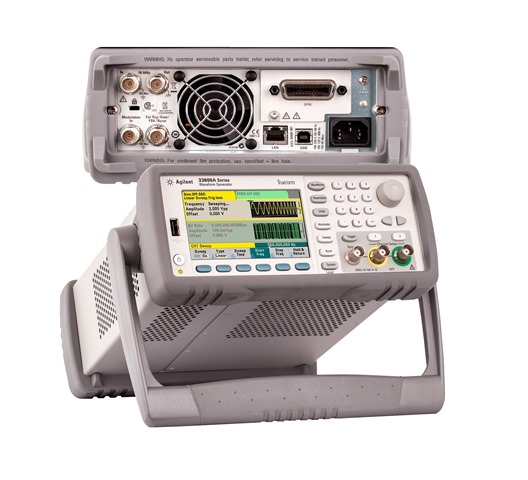Available in one- or two-channel, 80- or 120-MHz versions, the 33600A Series waveform generators can generate waveforms at a sample rate of up to 1 Gsamples/s while maintaining the lowest jitter — 1 ps, or about 1% of the jitter of common direct digital synthesis (DDS) generators — and the lowest total harmonic distortion — less than 0.03% — in their class. This lets engineers inexpensively generate the exact signals they need, placing edges more accurately and without introducing noise, so they can get more accurate results and meet tighter specs.

This performance is due to a new type of signal-generation capability, dubbed Trueform. First seen in the company’s lower bandwidth generators, the technology truly comes into its own at higher frequencies like those of the 33600A Series. Traditional DDS technology has intrinsic limitations that force users to either create work-arounds to offset its limiting performance, or buy a more expensive waveform generator. Trueform technology eliminates these challenges by combining the best of DDS with what’s called a point-per-clock architecture. The use of this technology in the 33600A Series results in a range of capabilities not normally found on waveform generators in this class.
For instance, for margin and distortion testing, users can sum and combine two waveforms to easily add noise to test signals using only one channel of the instrument; on two-channel version, they can sum/combine up to four signals. Further, the built-in noise generator’s noise bandwidth is user variable, providing better control of a test signal’s frequency content.
Users can also sequence waveform to create multiple configured waveforms with several common segments, thus building long, complex waveforms using minimal instrument memory. The instruments can generate Pseudo-Random Binary Sequence (PRBS) patterns too (for testing digital serial buses by streaming standard PRBS patterns with PN3 to PN32, for instance) without a separate pulse generator. There’s also an optional baseband IQ player for wireless communication engineers wanting to economically play IQ signals without an expensive signal generator, or make adjustments to the signal, such as amplitude gain, channel offset and channel skew, for a more accurate representation. (For a demo of these capabilities, see the video below.)
The 33600A generators’ very low jitter and 3-ns rise and fall times also let users set trigger points more accurately. A low voltage range, 1 mVpp, enables them to make output changes down to 1 µV, critical for testing today’s low-voltage circuit designs. What’s more, users can expand their instruments’ capabilities with a software upgrade: an 80-MHz unit can be boosted to 120 MHz or sample memory can be upped from 4 to 64 Msamples, for example. The waveform generators are available now at prices ranging from just $3,995 to $6,695.
Advertisement
Learn more about Keysight Technologies, Inc.





